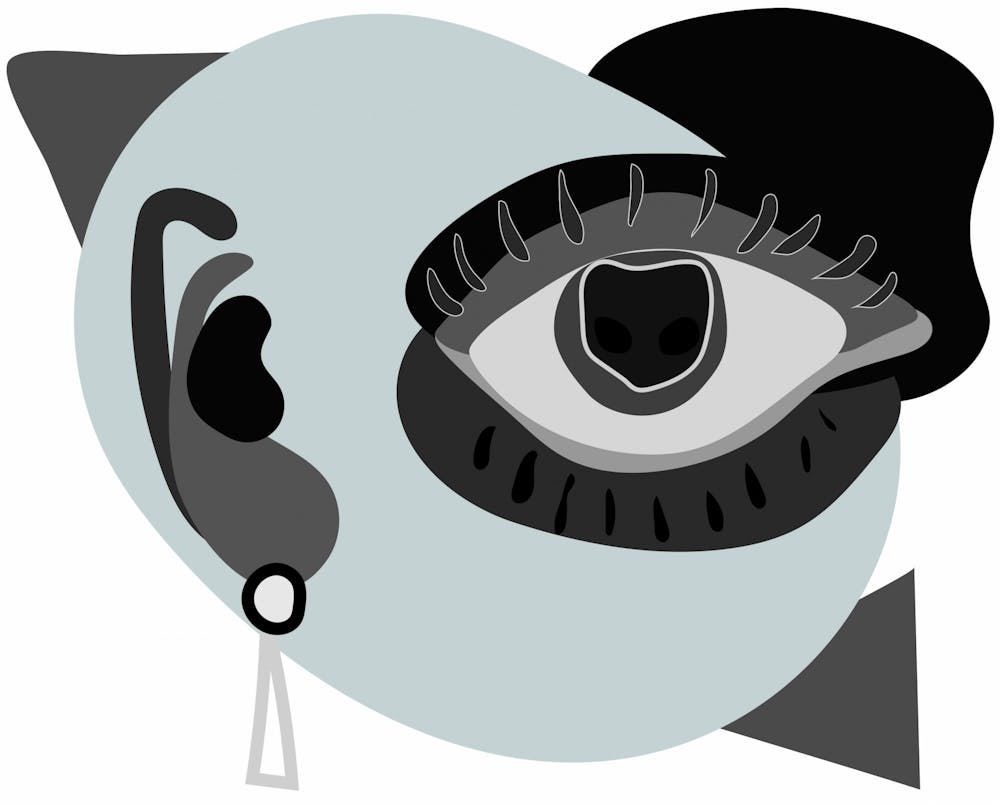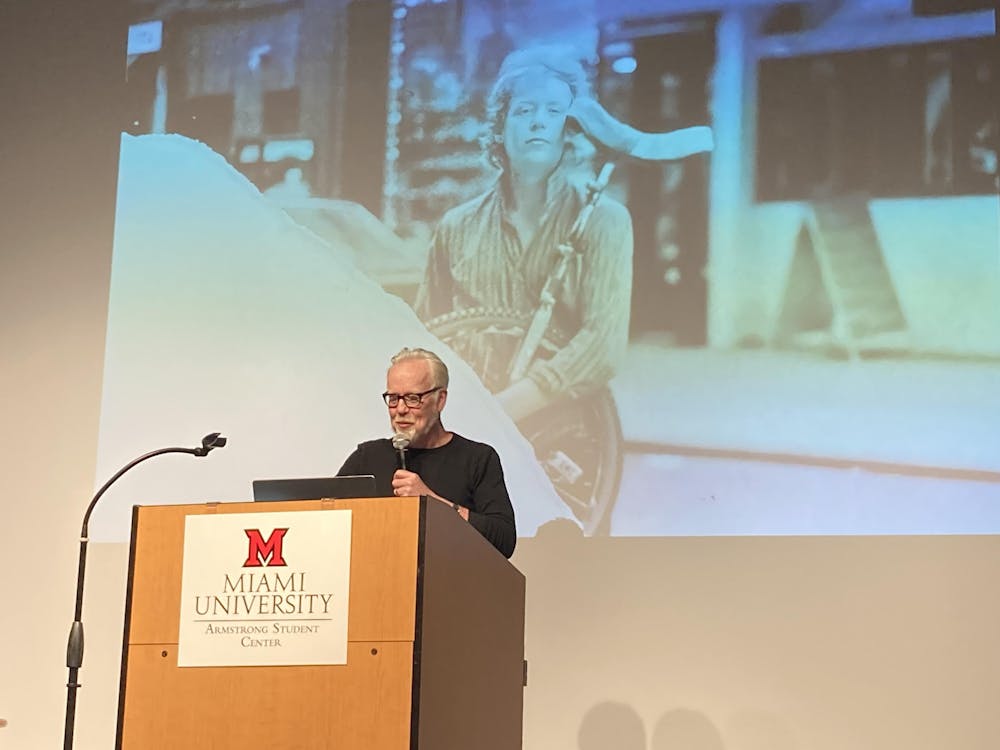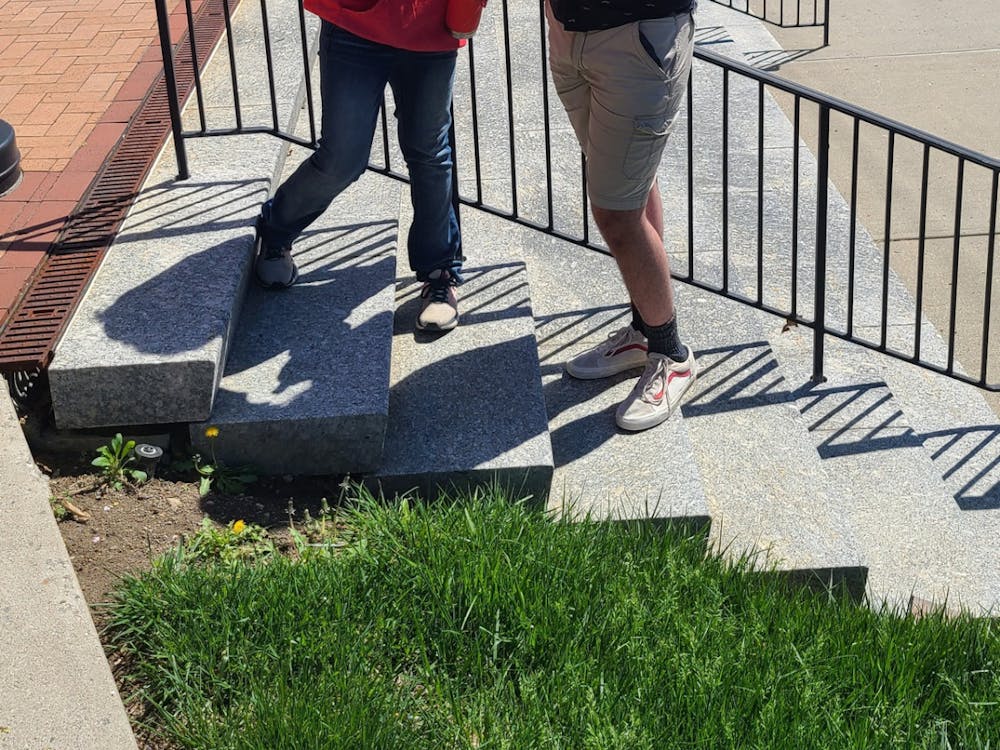On the third floor of Miami University’s Shriver Center, tucked into a corner office, is the Miller Center for Student Disability Services (SDS). The space is decorated with art from local disabled artists and soft, flowing music fills the room.
“Who are you here to see?” asked the woman sitting at the reception desk.
The three of us looked at each other.
“We have a meeting with Andy Zeisler,” Tim replied.
“Oh, Andy?” she said with widening eyes. “He’s a legend.”
J. Andrew Zeisler has been a part of the Miami community since 1984, first as an undergraduate student, then as the Director of Miami’s SDS.
Throughout his entire journey at the university, Zeisler has been an openly gay man. During his early years at Miami, he had to navigate the world of LGBTQ dating at a time when the university was far more conservative, and the AIDS epidemic was sweeping the nation.
“At the time, there wasn’t a lot of visible gay community at Miami,” Zeisler said. “It was kind of who you knew, really.”
Zeisler said in the 1980s, Miami’s LGBTQ community interacted differently than today.
“You know, when I was coming out, you didn’t have the apps, you didn’t have technology, you didn’t have cell phones,” Zeisler said. “The way you kind of met people was through eye contact, you know?”
“There was, if you had an earring, if you did things that were a little counter to culture … and there was always that eye contact thing,” he added. “So if you’re walking down the street, and you see somebody, and then you kind of look back at them, and they look back at you, it’s like, ‘Okay.’”
Zeisler got his ears pierced during his sophomore year of college. He was a Resident Assistant on Western campus, which Zeisler considered to be Miami’s countercultural hub. He met his first boyfriend, Thomas, through a mutual friend.
Enjoy what you're reading?
Signup for our newsletter
Zeisler said one of the biggest changes he’s noticed in the LGBTQ dating experience is not the romantic interactions, but rather how the sexual culture has changed.
“The big change is technology,” Zeisler said. “There’s all kinds of other ways to meet folks.”
In the 1980s, cruising, or the act of seeking out sexual partners in public places, was common in the gay community, Zeisler said. Now, that experience is completely different.
“You’re doing the same things with apps now,” Zeisler said, “so [cruising] is a culture that no longer exists. The internet has changed everything.”
Junior psychology and international studies double major Cody Vandergrift has previously used the gay dating app Grindr.
“The people on [Grindr] are very, like, demeaning and not respectful,” Vandergrift said. “They’re just there for a hook-up … it’s usually a one-time thing. Then, it’s done.”
“I feel like Grindr has sexualized the whole dating experience for gay people,” Vandergrift added. “With Grindr, you have sex, you get to know the person, and then maybe a relationship forms or you become friends. But usually, you don’t know the person.”
Although Vandergrift has used Grindr, he met his current boyfriend at Bar 1868’s Drag Night. First, the boys shared prolonged eye contact during the performance. Then, the two exchanged winks from across the bar. Cody’s boyfriend introduced himself after that, and the rest is history.
Tinder is another popular dating app, but it doesn’t share Grindr’s reputation for being reserved exclusively for anonymous hook-ups.
Sophomore biology major Maddie Rennie has a good friend who met her current girlfriend of four months on Tinder, but Rennie thinks success stories like her friend’s are few and far between.
“At first, I thought it was cool, and I liked to swipe because it was entertaining,” Rennie said. “But now, I just think it is so unrealistic to find anything real on there. I’ve tried so many times, and it just does not end up working out.”
Although Rennie is frequently disappointed with certain aspects of the digital dating scene, Zeisler doesn’t think it’s all bad.
From backward glances and contemplating the meaning of a pierced ear, to gay dating in the digital age, Zeisler’s 30-year watch over Miami’s red bricks has allowed him to bear witness to one constant: improvement.
“This campus is so much more inclusive and accessible [than it used to be],” Zeisler said. “Do we have work to do? Yeah, we always have work to do, but it’s nowhere near where it was.”
Zeisler acknowledges that while the Miami LGBTQ community has strengthened, it can always grow stronger.
“It’s the same for the gay community,” Zeisler added. “We’ve seen so much progress that’s happened over the years. That will continue to happen.”




